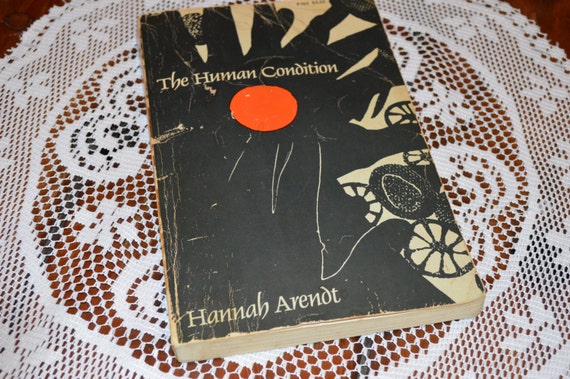
These answers are not a search for theĬauses or purposes of thought, Arendt notes, because the thinking activity is a In the third chapter of The Life of the Mind, Arendt sets forth a number of differentĪnswers that have been given to the question What makes us think? throughout I will end this post with a critical reflection on the conclusions that Arendt provides. In the final two chapters Arendt discusses two questions (What makes us think? and Where are we when we think?) and also comes to deal with the central question of the book. Arendt began the book with the central question whether thinking is a necessary condition for making a distinction between good and evil. The Reversal within the Vita Activa and the Victory of Homo FaberĤ3.This post presents an analysis of the final two chapters of Arendt’s book The Life of the Mind.

The Reversal of Contemplation and ActionĤ2. Introspection and the Loss of Common SenseĤ1.

The Discovery of the Archimedean Pointģ9. Unpredictability and the Power of Promiseģ6. Irreversibility and the Power to Forgiveģ4. The Traditional Substitution of Making for Actingģ3. Homo Faber and the Space of Appearanceģ1. The Web of Relationships and the Enacted StoriesĢ9. The Disclosure of the Agent in Speech and ActionĢ5. The Permanence of the World and the Work of ArtĢ4. The Instruments of Work and the Division of LaborĢ3.


“The Labour of Our Body and the Work of Our Hands”ġ6. Read More about The Human Condition Read Less about The Human Conditionġ1. This new edition, published to coincide with the sixtieth anniversary of its original publication, contains Margaret Canovan’s 1998 introduction and a new foreword by Danielle Allen.Ī classic in political and social theory, The Human Condition is a work that has proved both timeless and perpetually timely. The problems Arendt identified then-diminishing human agency and political freedom, the paradox that as human powers increase through technological and humanistic inquiry, we are less equipped to control the consequences of our actions-continue to confront us today. In her study of the state of modern humanity, Hannah Arendt considers humankind from the perspective of the actions of which it is capable. The past year has seen a resurgence of interest in the political thinker Hannah Arendt, “the theorist of beginnings,” whose work probes the logics underlying unexpected transformations-from totalitarianism to revolution.Ī work of striking originality, The Human Condition is in many respects more relevant now than when it first appeared in 1958.


 0 kommentar(er)
0 kommentar(er)
